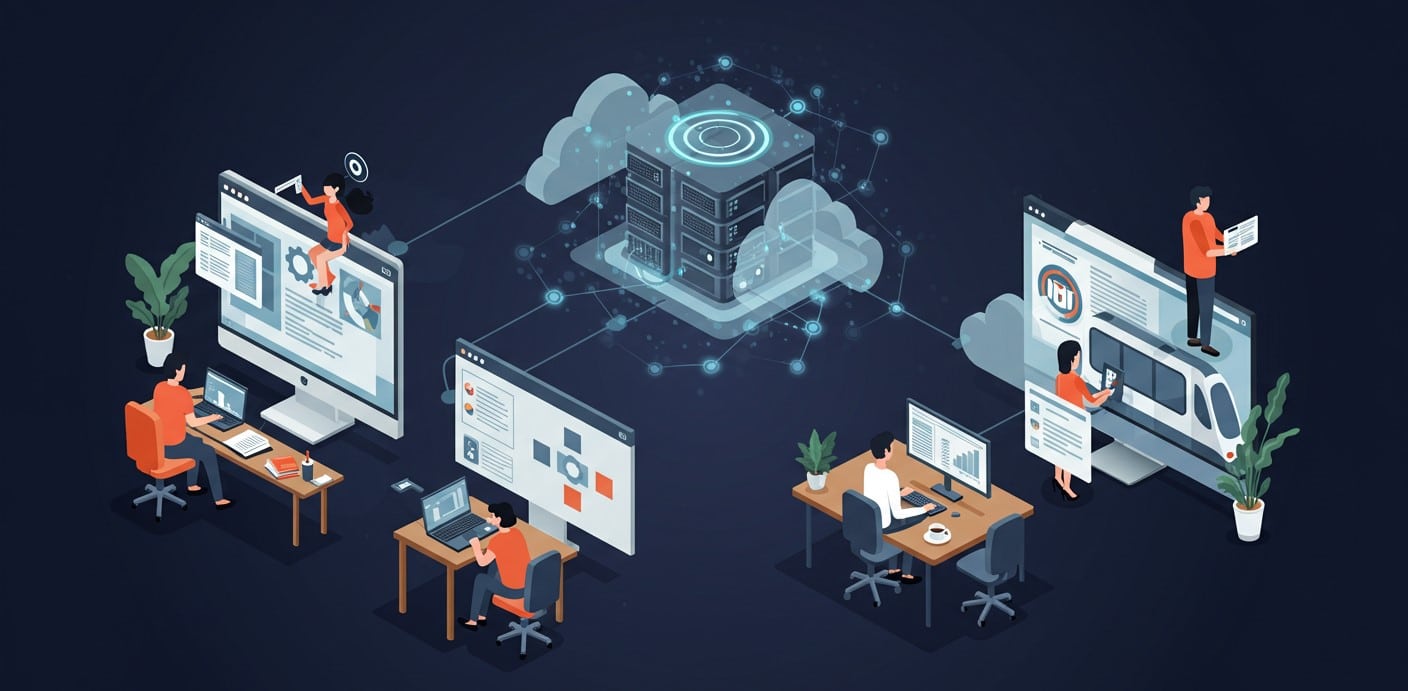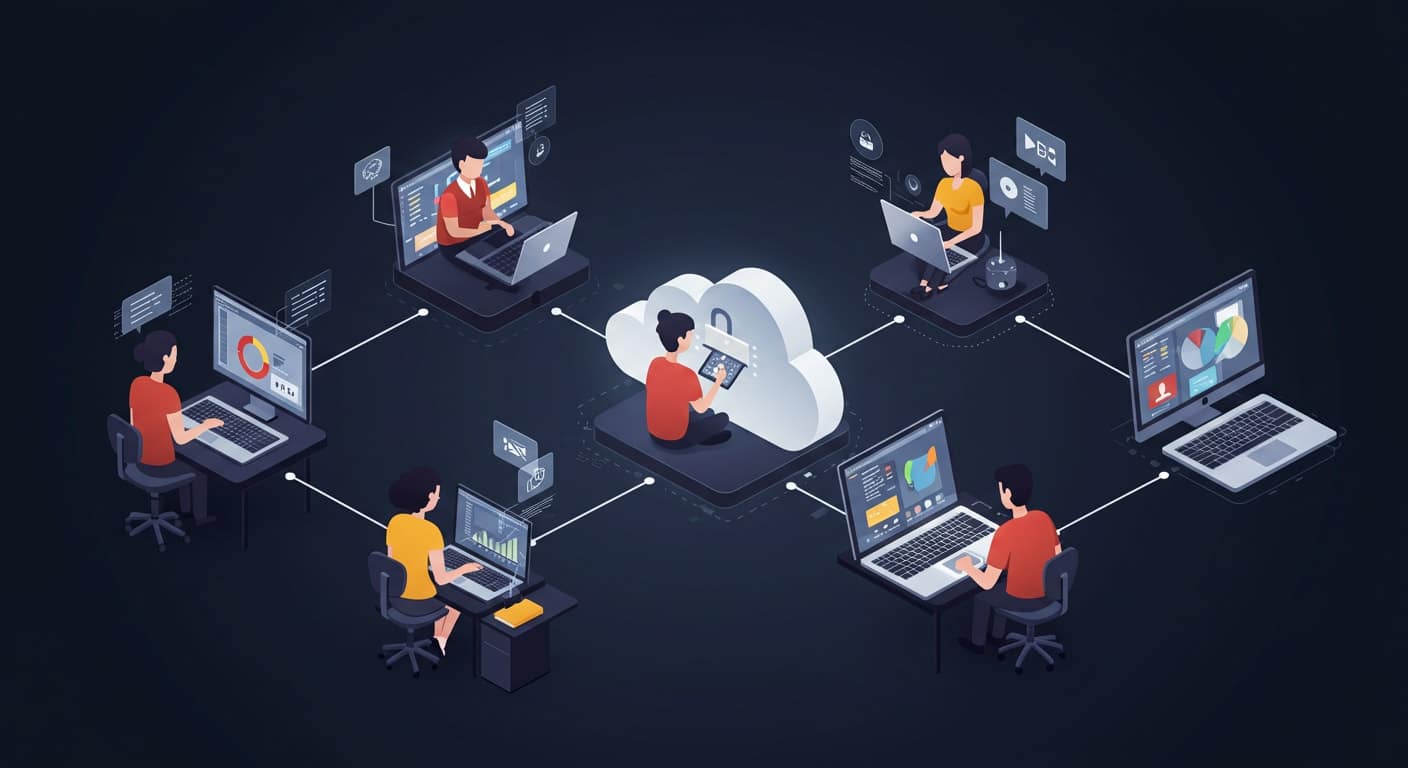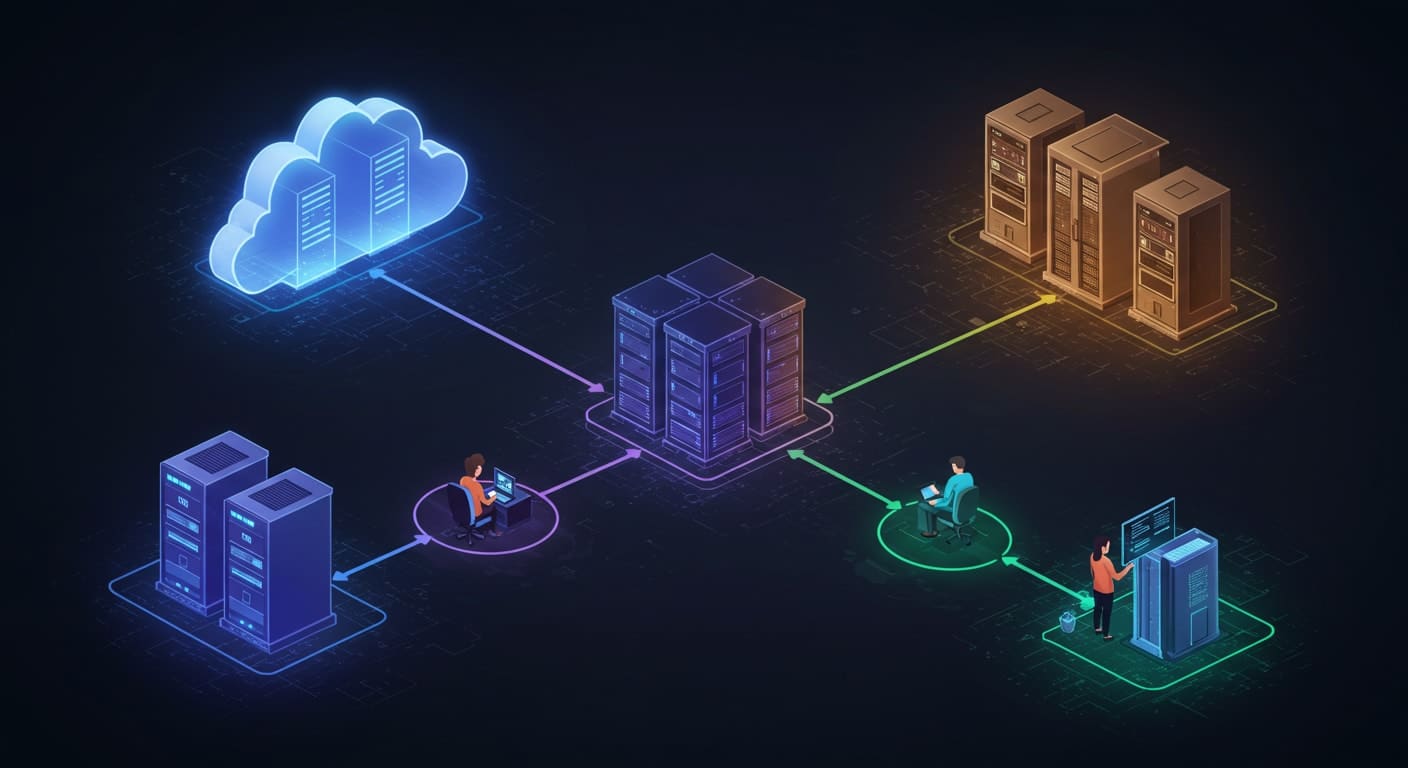The way you deliver computing resources has changed. Desktop virtualization is now a cornerstone of how organizations provide access to software, desktops, and data from virtually anywhere.
Instead of relying on physical machines, virtual desktop infrastructure (VDI) allows you to host desktops and applications in a centralized data center or cloud. This is especially valuable in environments where remote work, security, and device flexibility are top priorities.
Citrix has long been a dominant name in this space. Its desktop virtualization solutions have powered countless enterprise environments, helping teams stay productive across offices, devices, and geographies.
But as business needs evolve, many are starting to question whether traditional VDI is still the best fit. The complexity of deployment, management overhead, and infrastructure requirements are leading IT leaders to explore alternatives.
This article takes a close look at how Citrix desktop virtualization works. You’ll understand how it delivers virtual desktops and apps, where it excels, and why modern teams are now evaluating lighter, cloud-native platforms.
Solutions like Apporto are emerging to meet that demand—offering desktop virtualization with fewer layers, faster setup, and zero infrastructure to maintain.
2. What Is Citrix Desktop Virtualization?
At its core, Citrix desktop virtualization is a way to give users access to a full desktop or specific apps—without installing anything directly on their device. Everything runs on a virtual machine hosted in a data center or cloud environment.
Citrix delivers this through its platform known as Citrix Virtual Apps and Desktops. It enables organizations to manage and deliver secure access to both full virtual desktops and standalone applications across a variety of devices.
To make this work, Citrix uses several key components. The Citrix Workspace App is what users install to connect to their virtual environment. The Citrix Gateway manages secure access, while the Virtual Delivery Agent (VDA) runs on the server to handle desktop and app delivery.
These systems rely on virtual machines rather than physical desktops. They’re often accessed from endpoint devices like laptops, tablets, or thin clients—low-power terminals designed for virtual environments.
Unlike traditional setups where everything lives on a user’s device, this model centralizes computing power and control. It allows IT teams to manage access, data, and updates from a single point, while users connect from virtually anywhere.
This makes Citrix an appealing solution for organizations prioritizing security, flexibility, and centralized management.
3. How Citrix Delivers Virtual Desktops and Apps
To understand how Citrix delivers virtual desktops and apps, it helps to look at its core architecture. Citrix uses a series of tightly connected components to deliver content securely and efficiently from a data center or cloud to your users’ devices.
Core Components of Citrix Delivery
The delivery system includes several moving parts, each with a specific function:
- Delivery Controller: Manages user connections and assigns resources.
- Virtual Delivery Agent (VDA): Installed on the server or VM that hosts the desktop or app.
- Citrix Gateway: Provides secure remote access from outside the corporate network.
- Citrix Workspace App: The client software users install to access their virtual resources.
Together, these tools allow you to host, manage, and deliver applications and desktops to a wide range of devices.
Delivery Methods
Citrix offers flexibility in how and where you deploy these services:
- On-Premises: Hosted in your own data center using traditional Windows Server infrastructure.
- Public Cloud: Integrated with platforms like Microsoft Azure to offer Citrix DaaS (Desktop as a Service).
- Hybrid Models: Combines on-prem and cloud for flexible scaling and business continuity.
User Access
Here’s what the connection path typically looks like:
User Device → Citrix Workspace App → Citrix Gateway → Delivery Controller → VDA (Virtual Desktop)
This structure allows users to securely access their virtual environments from anywhere. It also gives IT full control over resource allocation, session policies, and data management.
But this layered system can also introduce complexity, especially when compared to newer platforms with more streamlined delivery models.
4. Architecture and Deployment Options
How you deploy Citrix makes a significant difference in performance, scalability, and complexity. The platform supports both on-premises and cloud-based models, as well as hybrid combinations of the two.
On-Premises Data Center Setup
Many organizations use Citrix within their own data centers, running on Windows Server and backed by internal network infrastructure. This setup often relies on physical or virtual desktops hosted in secure, company-controlled environments.
To make this work, you need several technical layers:
- Hypervisors to run virtual machines
- Provisioning services to manage VM creation
- Firewalls and authentication gateways for security
- Local storage and high-speed networks for performance
This gives IT full control but demands significant hardware investment and ongoing maintenance. Security, while centralized, becomes the organization’s responsibility.
Cloud and Hybrid Models
Citrix also supports deployments in public cloud environments, such as Microsoft Azure, using Citrix DaaS. This approach shifts infrastructure costs to a usage-based model while offering more flexibility.
Hybrid models let you blend on-prem resources with cloud computing power, providing scalable performance and disaster recovery options. However, integrating both environments requires careful planning, network coordination, and licensing alignment.
| Deployment Type | Key Advantage | Key Limitation |
|---|---|---|
| On-Premises | Full control | High infrastructure cost |
| Cloud | Scalability & flexibility | Dependency on network reliability |
| Hybrid | Best of both worlds | Complexity in integration |
These models allow Citrix to adapt to your environment—but that flexibility comes with operational overhead.
5. Benefits of Citrix Desktop Virtualization
Citrix is built to solve real-world IT challenges. From security to workforce flexibility, it offers strong advantages—especially for large organizations with distributed teams.
Security and Centralized Management
Citrix keeps apps and data centralized, so nothing resides on the end user’s device. This reduces the risk of human error, data loss, and unauthorized access.
All user activity flows through a centralized delivery system, giving IT full visibility and control. Policies, updates, and permissions are managed from one place, no matter where the users are located.
This centralized approach strengthens data protection and helps enforce compliance in regulated industries like healthcare, finance, and government.
Business Continuity and Flexibility
Citrix enables access to virtual desktops and apps from any device, including laptops, tablets, and thin clients. This gives employees the ability to work from any location, whether at home, in the office, or on the road.
It also helps organizations stay operational during office closures, natural disasters, or hardware failures. By decoupling computing from physical devices, Citrix ensures that work continues without interruption.
Citrix works well in various work environments, from industrial settings to knowledge-based roles. The ability to support remote employees while maintaining a consistent IT environment is a major strength.
| Benefit | What It Enables |
|---|---|
| Centralized Management | Simplified IT control and updates |
| Secure Access | Reduced risk from data loss or breaches |
| Device Flexibility | BYOD and hybrid work support |
| Business Continuity | Resilience against disruption |
While these benefits are real, they often come at the cost of setup time, infrastructure complexity, and support requirements.
6. Common Challenges with Citrix VDI Solutions
While Citrix offers powerful tools, the platform often comes with significant overhead. For many organizations, the complexity of setup and maintenance becomes a long-term burden.
Deploying Citrix means configuring a Delivery Controller, setting up the Virtual Delivery Agent (VDA), and managing provisioning services. These steps require in-depth technical knowledge and careful system integration.
You’ll also need to maintain a robust server infrastructure and juggle licensing across multiple components. As environments scale, this infrastructure can grow quickly—and so can the cost and complexity.
Citrix solutions are highly dependent on network stability, especially in remote scenarios. A small lapse in connectivity can disrupt access, which is problematic for distributed teams or hybrid workforces.
Even for experienced IT professionals, the learning curve is steep. Training, updates, and support add additional weight to IT operations.
| Common Challenge | Impact on Organizations |
|---|---|
| Setup Complexity | Longer deployment timelines |
| Infrastructure Overhead | Increased hardware and licensing costs |
| Network Dependency | Risk of downtime for remote users |
| Training Requirements | Higher support and onboarding effort |
These challenges are leading many organizations to explore more agile, cloud-native alternatives. Platforms like Apporto are designed to deliver the same outcomes—without the layers of traditional VDI complexity.
7. Apporto: A Modern Alternative to Traditional VDI
If Citrix feels like too much to manage, you’re not alone. Apporto offers a different approach—simplifying virtual desktop delivery without sacrificing control or performance.
Unlike traditional VDI, Apporto requires no on-prem infrastructure, no hypervisors, and no multi-tiered software stack. It’s a fully browser-based platform, meaning users don’t need to install anything—not even a Citrix Workspace App icon.
From day one, you can deliver desktops and applications to users with zero configuration on their physical devices. Whether they’re working from a home laptop, classroom desktop, or personal tablet, access is instant and secure.
Apporto is built for modern environments, especially remote employees, educational institutions, and hybrid teams. The platform is designed to scale smoothly, letting you onboard users without needing to scale your internal IT team.
Key benefits include:
- Fast deployment: Go live in hours, not weeks
- No endpoint installation: All access through the browser
- Security by design: Data never touches the user’s device
- Low maintenance: No patching, no provisioning, no image management
- Consistent experience: Works the same across all devices
| Feature | Apporto |
|---|---|
| Infrastructure Needed | None |
| Deployment Time | Hours |
| User Setup | Browser login only |
| Maintenance | Minimal to none |
| Best For | Remote work, education, hybrid teams |
Apporto is desktop virtualization designed for speed, simplicity, and modern workstyles. If traditional VDI feels outdated or overbuilt, this is your chance to step into something lighter.
8. Citrix vs Apporto: A Simple Comparison Table
| Feature | Citrix Desktop Virtualization | Apporto |
|---|---|---|
| Infrastructure Requirements | High (servers, VDA, Gateway) | None (fully cloud-native) |
| User Setup | Requires Citrix Workspace App | Browser-based, zero install |
| Deployment Time | Weeks | Hours |
| IT Overhead | High | Minimal |
| Access Model | Hybrid or On-Prem | Fully Cloud |
| Best For | Large enterprises | Agile teams, education, SMBs |
10. Conclusion
Citrix has played a foundational role in the evolution of desktop virtualization, helping organizations centralize access and increase security across complex environments. Its platform continues to serve large enterprises that require granular control and deep infrastructure integration.
However, the landscape is shifting. The rise of hybrid work, the demand for remote access, and the need for cloud-native efficiency are changing how businesses approach VDI.
If you’re looking for a faster, simpler, and more scalable solution, it may be time to explore alternatives.
Looking to reduce complexity in your VDI strategy? Discover how Apporto makes desktop virtualization simple, scalable, and secure. Try it now.
11. Frequently Asked Questions (FAQs)
1. What is Citrix Desktop Virtualization used for?
Citrix Desktop Virtualization is used to provide secure, remote access to virtual desktops and applications. It allows employees to work from any location while IT maintains centralized control over data and software.
2. Does Citrix work on the cloud?
Yes, Citrix supports cloud deployments through platforms like Microsoft Azure via Citrix DaaS (Desktop as a Service). Organizations can choose from on-prem, cloud, or hybrid configurations based on their infrastructure needs.
3. What devices can access Citrix desktops?
Users can connect to Citrix desktops from laptops, tablets, thin clients, smartphones, and other endpoint devices. The experience is designed to be consistent across different platforms.
4. Do I need to install software to use Citrix?
Yes, users typically need to install the Citrix Workspace App on their device to connect to virtual desktops or applications. This adds a layer of setup and device compatibility considerations.
5. How is Apporto different from Citrix?
Apporto delivers virtual desktops directly through the browser, with no installations, no infrastructure requirements, and minimal IT involvement. It’s designed for fast deployment and ease of use, making it ideal for remote teams, educational environments, and agile businesses.







